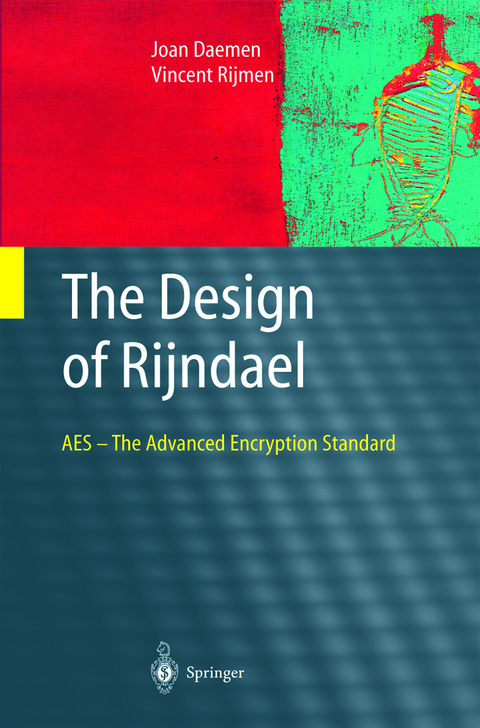
The Design of Rijndael
Springer Berlin (Verlag)
978-3-540-42580-9 (ISBN)
1. The Advanced Encryption Standard Process.- 2. Preliminaries.- 3. Specification of Rijndael.- 4. Implementation Aspects.- 5. Design Philosophy.- 6. The Data Encryption Standard.- 7. Correlation Matrices.- 8. Difference Propagation.- 9. The Wide Trail Strategy.- 10. Cryptanalysis.- 11. Related Block Ciphers.- Appendices.- A. Propagation Analysis in Galois Fields.- A.1.1 Difference Propagation.- A.l.2 Correlation.- A. 1.4 Functions that are Linear over GF(2).- A.2.1 Difference Propagation.- A.2.2 Correlation.- A.2.4 Functions that are Linear over GF(2).- A.3.3 Dual Bases.- A.4.2 Relationship Between Trace Patterns and Selection Patterns.- A.4.4 Illustration.- A.5 Rijndael-GF.- B. Trail Clustering.- B.1 Transformations with Maximum Branch Number.- B.2 Bounds for Two Rounds.- B.2.1 Difference Propagation.- B.2.2 Correlation.- B.3 Bounds for Four Rounds.- B.4 Two Case Studies.- B.4.1 Differential Trails.- B.4.2 Linear Trails.- C. Substitution Tables.- C.1 SRD.- C.2 Other Tables.- C.2.1 xtime.- C.2.2 Round Constants.- D. Test Vectors.- D.1 KeyExpansion.- D.2 Rijndael(128,128).- D.3 Other Block Lengths and Key Lengths.- E. Reference Code.
"...an excellent choice for people who are interested in how Rijndael really works and who need more explanations than research papers usually contain. It is a book that readers will regularly consult when they need to look up details about Rijndael." -Computing Reviews
| Erscheint lt. Verlag | 14.2.2002 |
|---|---|
| Reihe/Serie | Information Security and Cryptography |
| Zusatzinfo | XVII, 238 p. |
| Verlagsort | Berlin |
| Sprache | englisch |
| Maße | 155 x 235 mm |
| Gewicht | 501 g |
| Themenwelt | Informatik ► Netzwerke ► Sicherheit / Firewall |
| Schlagworte | Algorithm analysis and problem complexity • Algorithm design • Code • Cryptoanalysis • Cryptology • data encryption • Data Security • Discrete Mathematics • Encryption • Galois field • Hardcover, Softcover / Informatik, EDV/Informatik • HC/Informatik, EDV/Informatik • Integrated Circuit Design • Kryptographie / Kryptologie • secure communication • Secure Networking • security • Statistics • System Security |
| ISBN-10 | 3-540-42580-2 / 3540425802 |
| ISBN-13 | 978-3-540-42580-9 / 9783540425809 |
| Zustand | Neuware |
| Informationen gemäß Produktsicherheitsverordnung (GPSR) | |
| Haben Sie eine Frage zum Produkt? |
aus dem Bereich


